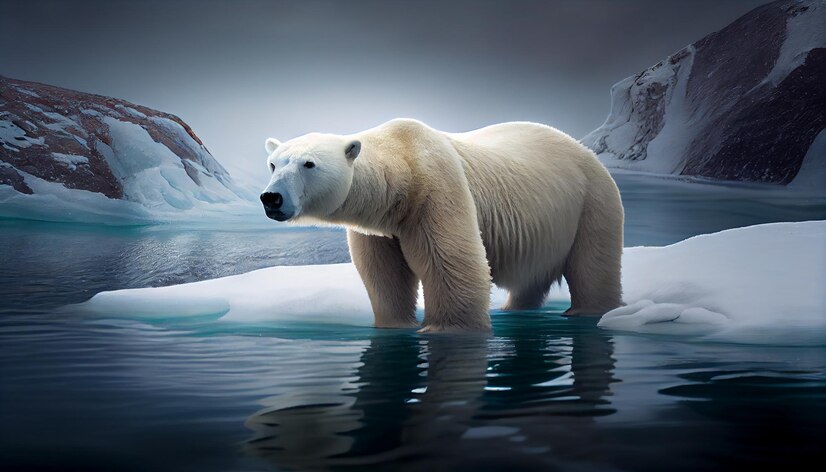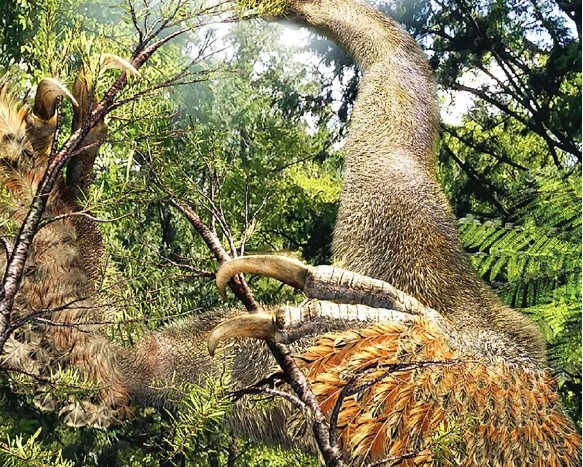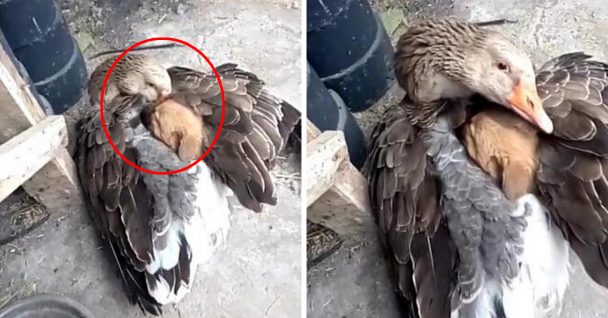How Climate Change Threatens the Existence of Polar Bears: A Food Shortage Story

Researchers at the University of T Scarborough have explicitly connected the fall in polar bear populations in Western Hudson Bay to the melting of sea ice brought on by climate change.
According to a model the researchers created, the bears' lack of energy, which results from a shortage of food brought on by shorter hunting seasons on melting sea ice, is the reason of the population reduction.
"A loss of sea ice means bears spend more time fasting on land and less time hunting seals," explains Louise Archer, the study's lead author and postdoc at the University of T Scarborough.
"This negatively affects the bears' energy balance, leading to reduced reproduction, cub survival and, ultimately, population decline."
According to a model the researchers created, the bears' lack of energy, which results from a shortage of food brought on by shorter hunting seasons on melting sea ice, is the reason of the population reduction.
"A loss of sea ice means bears spend more time fasting on land and less time hunting seals," explains Louise Archer, the study's lead author and postdoc at the University of T Scarborough.
"This negatively affects the bears' energy balance, leading to reduced reproduction, cub survival and, ultimately, population decline."
Did you know? You can comment on this post! Just scroll down
The researchers' "bio-energetic" model measures how much energy the bears currently obtain from hunting seals and how much energy they require for growth and reproduction. The model's distinctive feature is its comparison of four decades of monitoring data from the Western Hudson Bay polar bear population between 1979 and 2021 with the complete lifecycle of individual polar bears, from cub to adulthood.
The number of polar bears in this area has decreased by over 50% throughout this time. According to monitoring data, polar bears' average size is also decreasing. Over a 37-year period, the body mass of one-year-old cubs has decreased by 26 kg (47 lbs) while that of adult females has decreased by 39 kg (86 lbs).
The number of polar bears in this area has decreased by over 50% throughout this time. According to monitoring data, polar bears' average size is also decreasing. Over a 37-year period, the body mass of one-year-old cubs has decreased by 26 kg (47 lbs) while that of adult females has decreased by 39 kg (86 lbs).
The researchers' model closely matches the monitoring data, which means it accurately predicts what is happening to the polar bear population and what will happen to it in the future if sea ice loss and longer periods of energy shortage persist.
"Our model goes one step further than saying there's a correlation between declining sea ice and population decline," says another co-author of the paper, Péter Molnár, an associate professor in the Department of Biological Sciences at the University of T Scarborough.
"Our model goes one step further than saying there's a correlation between declining sea ice and population decline," says another co-author of the paper, Péter Molnár, an associate professor in the Department of Biological Sciences at the University of T Scarborough.
It offers a system that illustrates the consequences of reduced ice, feeding duration, and total energy. We find that the figures mirror what we're seeing in real life almost exactly.
Mother polar bears and their young are especially at risk.
Cubs are particularly affected by these climate-related issues, according to the researchers, who also included co-authors from Environment and Climate Change Canada.
According to Archer, cub survival is at risk because moms provide less milk during shorter hunting seasons. If the cubs don't put on enough weight during their initial fasting phase, their chances of surviving are decreased.
Mother polar bears and their young are especially at risk.
Cubs are particularly affected by these climate-related issues, according to the researchers, who also included co-authors from Environment and Climate Change Canada.
According to Archer, cub survival is at risk because moms provide less milk during shorter hunting seasons. If the cubs don't put on enough weight during their initial fasting phase, their chances of surviving are decreased.
There are also fewer cubs born to mothers. Mothers are holding their cubs longer because they aren't robust enough to survive on their own, according to monitoring data, and cub litter sizes have decreased by 11% from nearly 40 years ago.
"It's pretty simple -- the survival of cubs directly impacts the survival of the population," says Archer, whose work is supported by Polar Bears International, a non-profit organization, and a Mitacs Elevate postdoctoral fellowship.
Broader uses for the model
"It's pretty simple -- the survival of cubs directly impacts the survival of the population," says Archer, whose work is supported by Polar Bears International, a non-profit organization, and a Mitacs Elevate postdoctoral fellowship.
Broader uses for the model
The researchers caution that other polar bear populations may experience comparable decreases as the Arctic heats at a rate four times faster than the global average. Western Hudson Bay has long been regarded as a harbinger for polar bear numbers worldwide.
"This is one of the southernmost populations of polar bears, and it's been monitored for a long time, so we have very good data to work with," says Molnár, a specialist in the effects of global warming on large mammals.
Based on predicted sea ice loss trajectories, there is every reason to think that what is occurring to polar bears in this area will also happen to polar bears in other areas. In essence, this model outlines their destiny.
The study, which is published in the journalScience, received funding from the Natural Sciences and Engineering Research Council of Canada and the Canada Foundation for Innovation.
"This is one of the southernmost populations of polar bears, and it's been monitored for a long time, so we have very good data to work with," says Molnár, a specialist in the effects of global warming on large mammals.
Based on predicted sea ice loss trajectories, there is every reason to think that what is occurring to polar bears in this area will also happen to polar bears in other areas. In essence, this model outlines their destiny.
The study, which is published in the journalScience, received funding from the Natural Sciences and Engineering Research Council of Canada and the Canada Foundation for Innovation.
Article Posted 3 Months ago. You can post your own articles and it will be published for free.
No Registration is required! But we review before publishing! Click here to get started
One Favour Please! Subscribe To Our YouTube Channel!
468k
Cook Amazing Nigerian Dishes, Follow Adorable Kitchen YouTube Channel!
1.1m
Like us on Facebook, Follow on Twitter
React and Comment
Click Here To Hide More Posts Like This
Watch and Download Free Mobile Movies, Read entertainment news and reports, Download music and Upload your own For FREE.
Submit Your Content to be published for you FREE! We thrive on user-submitted content!
But we moderate!

















